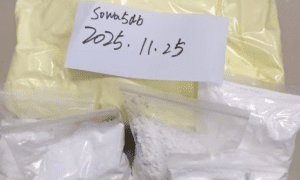Data acquisition system components bring order to how information is collected and understood. They form the link between what happens in the physical world and what gets analyzed in digital form. Each element works in sync, turning raw signals into meaningful insights that guide smart decisions.
Behind every accurate reading is a network of connected parts working quietly but precisely. These systems act as bridges between data, technology, and understanding.
In this blog, we will discuss how data acquisition system components work together to collect, process, and analyze real-time data accurately and efficiently.
How Sensors Capture Physical Changes for Accurate Data Input
Sensors act as the first link in real-time data acquisition. They notice small changes in light, sound, pressure, or motion and turn them into signals. These signals begin the path that data follows to reach analysis.
The sensors must match what is being measured to keep results true. Every sensor records with care and precision. Their role sets the foundation for every accurate data reading that follows.
The Importance of Signal Conditioning in Data Quality and Accuracy
The signal conditioning process makes sure raw signals stay clean and stable. It filters noise and adjusts levels to make the signal clear. This step keeps the data steady before it moves to the next stage.
Without this process, data might be weak or unclear. Proper conditioning helps maintain accuracy throughout the system. It keeps every signal ready for safe and correct use within the setup.
Role of Analog-to-Digital Converters in Real-Time Data Processing
Analog-to-digital conversion changes natural signals into digital form. This makes it possible for computers to read and handle the data easily. It ensures that every signal is turned into accurate digital numbers.
These converters are key to how systems understand and manage data. They keep the flow smooth and quick for precise results. Without them, most digital systems could not operate correctly in real time.
How Data Storage and Processing Units Manage Collected Information
Once data is collected, it needs a safe place to stay. Data storage units hold and organize it so it can be used later. These systems keep everything in order and easy to access.
Processing units check and manage what is stored. They sort, arrange, and prepare data for study or sharing. These parts keep the data system working smoothly and effectively at all times.
Communication Modules: Linking Devices for Smooth Data Transmission
Communication modules connect every part of the system. They let sensors, converters, and processors share information fast and safely. These connections make the flow of data clear and steady across devices.
Modern systems use these modules to make operations easier and stronger. Many teams learn about data acquisition techniques to improve how data moves between parts. Good communication keeps the entire setup working without delay or loss.
The Value of Connected Data Acquisition System Components
Data acquisition system components work together as one complete structure. Each part relies on the other to keep information true and clear. This unity makes systems dependable and efficient for every type of use.
Their coordination shows how connection creates accuracy. Each part adds meaning and structure to raw data. Together, they turn signals into understanding and power every data-driven decision.
Did you find this article helpful? Explore our other blog posts for more insights.



































